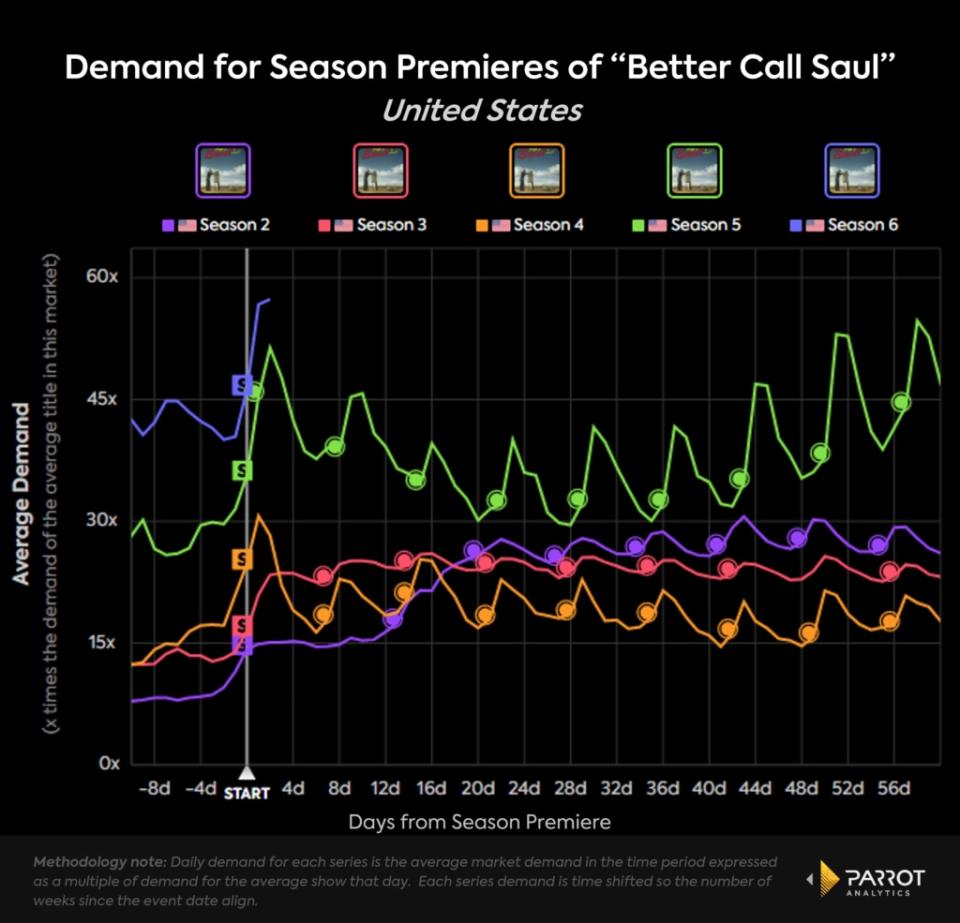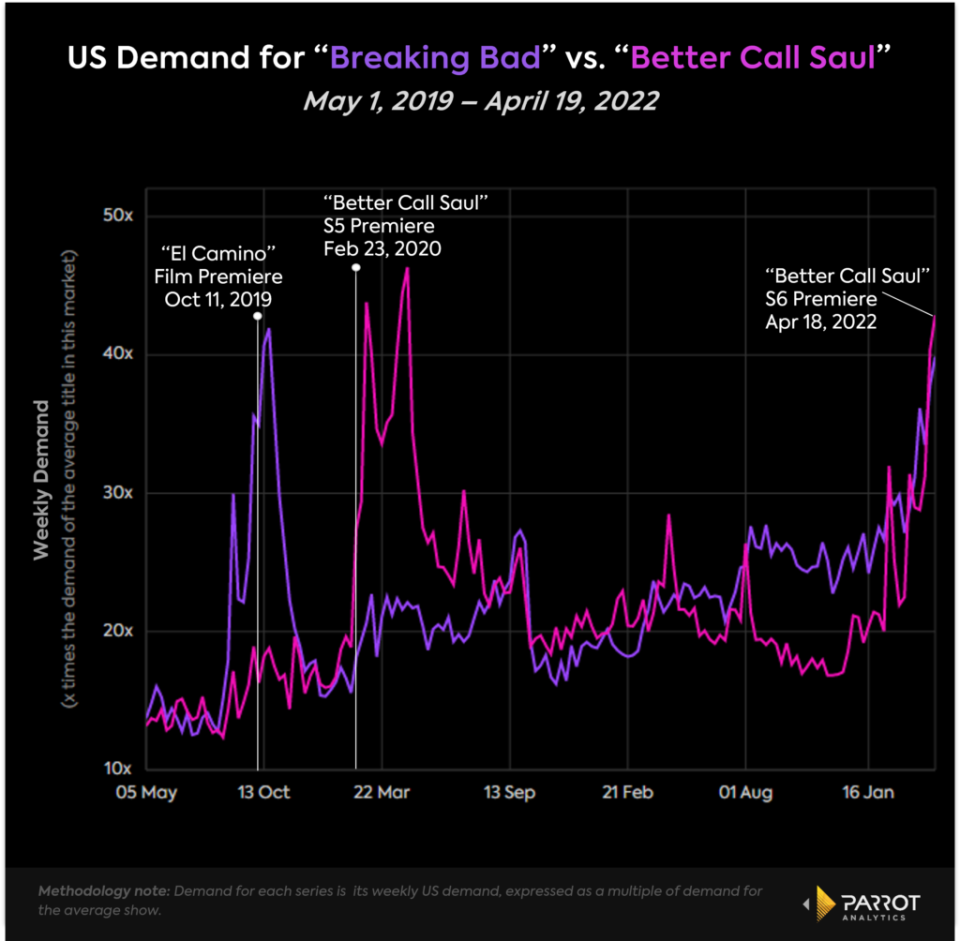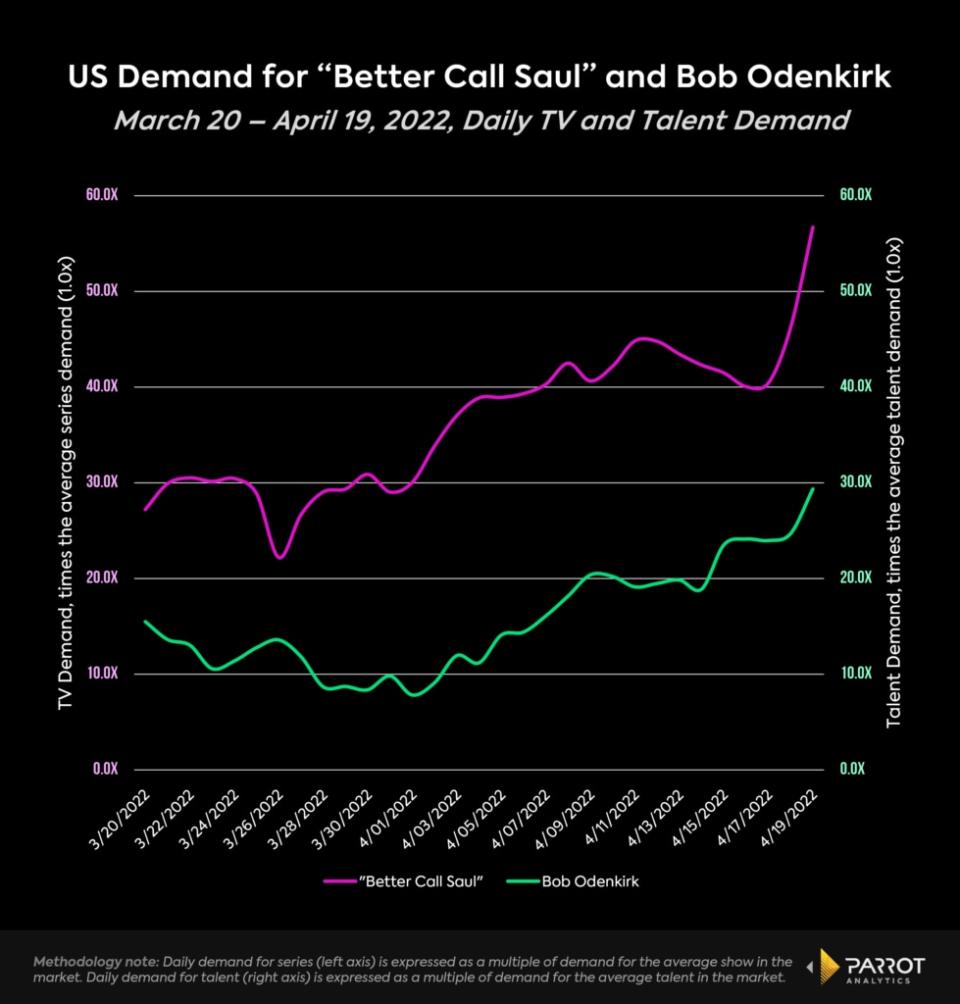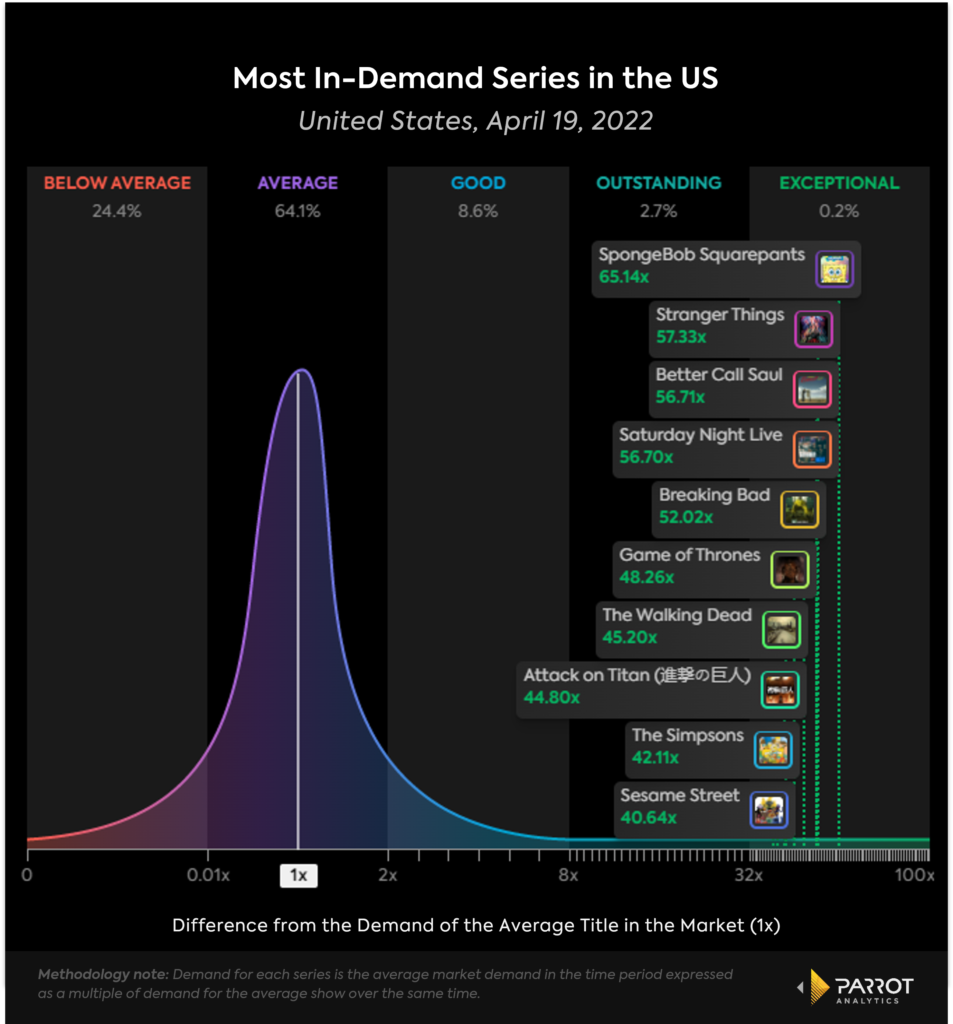How ‘Better Call Saul’ Keeps an Entire Franchise in Demand | Charts
- Oops!Something went wrong.Please try again later.
- Oops!Something went wrong.Please try again later.
- Oops!Something went wrong.Please try again later.
AMC’s “Better Call Saul” premiered its sixth and final season on April 18, and so far looks on track to be the most in-demand season of the “Breaking Bad” prequel yet. And in the process, it’s bolstering demand for its star and the franchise as a whole.
Currently, demand for “Better Call Saul” the day after its premiere is nearly 60 times that of the average show, according to Parrot Analytics‘ data, which takes into account consumer research, streaming, downloads and social media, among other consumer engagement.
This puts “Better Call Saul” comfortably ahead of the previous season — which itself had an outstanding premiere with demand significantly higher than those of seasons 2-4.

One reason for the show’s stellar demand as it kicks off its final season is the fact that its timeline is intersecting with “Breaking Bad,” the hit show starring Bryan Cranston and Aaron Paul that ran for five seasons between 2008 and 2013. If we look at demand for these two series over the past three years, we can see how different events have driven the ebbs and flows of audience attention for both shows.
At the end of 2019, “Breaking Bad” saw a huge spike in demand in the weeks leading up to the premiere of the movie “El Camino” as audiences caught up on the series ahead of its film sequel. Demand for “Better Call Saul” was relatively unchanged by the movie premiere. However, it saw an even larger spike in demand a few months later when its fifth season premiered.

While the above two events mainly drove demand for one show or the other, the latest season of “Better Call Saul” has caused demand for both shows to spike in tandem. Finally bringing the timelines of these shows together and adding more characters from the original series has helped to drive a resurgence of interest in “Breaking Bad.” This has an important takeaway for franchises in general — the more interconnected pieces of content there are, the more they benefit from interest in other parts of the shared universe.
Of course, a major piece of “Better Call Saul’s” appeal to fans is the star of the show himself, Bob Odenkirk. The actor’s character, Saul Goodman, was a fan favorite in “Breaking Bad” and the idea of developing this character more fully eventually led to the prequel which explores his backstory.
As his character is so central to the show, it makes sense that the talent demand for Odenkirk has tracked closely with demand for the show as it grew in the lead-up to the latest season. Currently, demand for Odenkirk commands nearly 30 times the demand of the average star in the U.S.

The recent success of “Breaking Bad” and “Better Call Saul” has put AMC in an enviable position. Three of the 10 most in-demand shows in the U.S. currently are from the network. “The Walking Dead” ranked as the seventh most in-demand show as of April 19.
AMC’s zombie apocalypse series is another example of a deftly managed franchise with numerous planned, current and already-concluded shows and spinoffs. If AMC continues to build out franchises like these, it should be able to continue to squeeze the most value from its source material.


